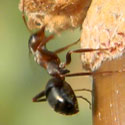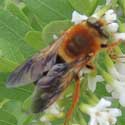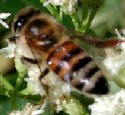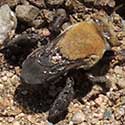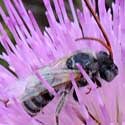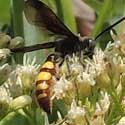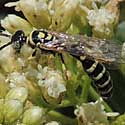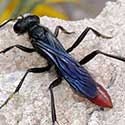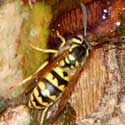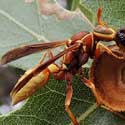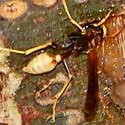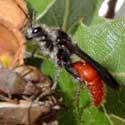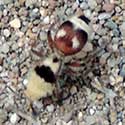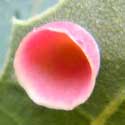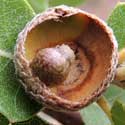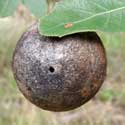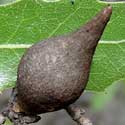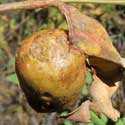Wood Ant
Ubiquitous ants in woodlands and shrublands foraging on trees and foliage. Sprays formic acid in defense. More ...
Glorious Bee
Much bigger than most bees. Rusty red hairs cover thorax. Mountain foothills along Mexico border. More ...
Honey Bee
Golden brown bee with black abdominal bands. Rather
large and slow compared to most bees. Overly common. More
...
Digger Bee
A little larger than a honey bee. Nest tunnel in soil. More ...
Long-horned Bee
Named for their conspicuous long antennae. There are many kinds of similar Melissodes bees. More ...
Flower Wasp
Many wasp species have various versions of this yellow and black pattern. More ...
Myzinum Wasp
Males are long and slender with bold yellow and black bands. False stinger at abdomen tip. More ...
Grasshopper Hunter
After catching a grasshopper it is stung and paralyzed before being dragged into a nest burrow. More ...
Western Yellowjacket
Sharply marked yellow and black hornet that comes to open food or sugary drinks. Yellow ring around eye. More ...
Golden Paper Wasp
Brick red thorax and gold yellow abdomen. Unless you disturb their nest these likely won't sting. More ...
Comanche Paper Wasp
Yellow abdomen attached by very narrow 'waste'. Thorax and wings coffee-brown. Comes to flowers and builds paper nests. More ...
Velvet Ant (male)
Males are winged, but females wingless. Contrasting red and black wasp. Visits flowers or other nectar source. More ...
Velvet Ant
This wingless female wasp crawls rapidly moving forward and backward but the fake head eye spots confuses. More ...
Saucer Gall Wasp
Many varieties of galls on new growth of scrub oak each the result of a different species of cynipid wasp. More ...
Acorn Cup Gall
A minute wasp caused this plant growth on an oak acorn cup is the size of a pinhead. More ...
Oak Apple Gall
The wasps that were in this gall have emerged through the pin hole, i.e. they are very small! More ...
Oak Stem Gall
This gall is located on a twig. It formed when the twig was just new. On Emory Oak. More ...
Rose Pea Gall
This gall is located on a compound leaf of the Wood Rose bush and is caused by a wasp. More ...
